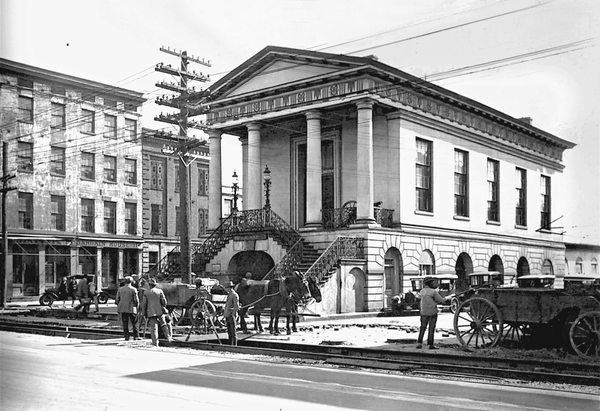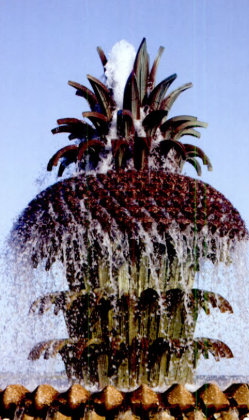Charleston’s repeated appearance at the top of the favorite city list since 2013 may come as a surprise to some, but after taking a close look at what the city has to offer, it’s no shock at all. From the food to culture and style, Charleston is always sporting something new and exciting!
The Story of the Holy City
Large amounts of foreign traffic isn’t new for the city of Charleston, South Carolina. In 1670, the city, originally called Charles Town, was founded and settled by English colonists. By the mid-eighteenth century, it had grown into a booming seaport, housing goods and people from all over the world. This, combined with the cultivation of rice, cotton, and indigo, built Charleston into one of the South’s most prosperous cities.
Throughout the 18th century, Charleston flourished. Drayton Hall was built in 1742 and Middleton Palace in 1755. Then, in 1780, during the Revolutionary War, Charleston was captured by the British. Luckily, two years later, the British were forced to retreat, and in 1783, the original name of ‘Charles Town’ was changed to today’s Charleston. By 1800, the city’s population had reached 20,000, making it one of the five most densely populated cities in the country at that time.
Charleston experienced a halt in its growth during the Civil War. In April 1861, Confederate soldiers attacked the Union-occupied Fort Sumter, a collision that ignited the Civil War. While the city struggled to recover after the war demolished most of its resources and harbor traffic, it accidentally became a historical and cultural museum. Due to a lack of funds to rebuild damaged buildings when the war finally ended, Charleston chose to instead repair the existing buildings, thus preserving much of the original architecture.
A post-Civil War Charleston drifted away from its agricultural profit, and focused its economy on trade and industry. The Navy Yard, constructed in 1904, assisted with the city’s influx of traffic in the 20th century. An increase in port activities through the century lent to Charleston becoming one of the nation’s most prosperous cities. Most of the internal revenue comes from the Charleston Naval Base, a boom in the local biotechnology and medical research industries, and tourism. The city of Charleston estimates that 7 million people visit the city annually, bringing in roughly $7.37 billion in economic revenue.

Visiting Charleston Today
Walking through the streets of Charleston, one experiences a delightful collision of old and new. Antebellum homes from the Civil War Era have been expertly preserved and are open to the public, capturing a tumultuous and prosperous era in Charleston’s history. Homes like the Joseph Manigault House, the Joseph Heyward-Washington House, and Drayton Hall, known by local lore for its ghostly residents and unexplained phenomena, are a few of the most popular. The Fort Sumter National Monument is one of the most famous landmarks preserved from the Civil War. Visitors can wander the fort and learn about the battle that sparked the Civil War.
To see historic Charleston in its fullest form, one can tour the original neighborhoods by a horse-drawn carriage, visit the Dock Street Theatre, gaze down the mind-bending spiral staircase at the Nathaniel Russell House, and visit the Magnolia Plantation and Garden founded by the Drayton family in 1676. Visitors cannot leave the city without strolling down the Battery – a stretch of impressive seawall named after a coastal defense landmark from the Civil War era located on the stretch. Charleston is well-known for streets lined with grand southern live oaks, covered in Spanish moss, and South Carolina’s state tree, the Cabbage Palmetto. Along the waterfront is the most famous of these streets, Rainbow Row, with its line of pastel colored houses.
Over the years, Charleston has proven itself to be an ever-changing city with the introduction of new attractions to accompany its historical ones. A modern architectural wonder, the Arthur Ravenel Jr. Bridge was completed in 2005 – this eight-lane bridge connects the nearby town Mount Pleasant to Charleston and is the third longest cable-stayed bridge in the Western Hemisphere. The bridge includes a bicycle path for visitors to use as a new vantage on Charleston’s skyline. Along with the Ravenel, downtown’s Pineapple Fountain adds to the city’s tropical motif and is meant to symbolize the Charleston’s renowned southern hospitality. Returnees and new visitors alike should walk through Brittlebank Park, known by locals for its outdoor recreational activities, most commonly hiking, biking, and fishing.

All this draws 7 million tourists every year, a number that has increased exponentially since the city was first named the #1 travel destination in 2013. However, the sharp increase in tourist traffic in recent years hasn’t come without some hesitation from locals. They worry a higher demand will increase the cost of living, and force the prices of both hotels and food to reflect this for visitors and locals. Still, tourism serves as a major source of revenue for the city. Charleston’s notoriety has people from all over the globe making this southern city their new home.
Much of Charleston’s charm comes from its ability to balance a robust history with the intense demands of modernity. In refurbishing much of its foundation after the Civil War, Charleston inadvertently preserved decades of historical buildings, forts, and monuments that are favorite sites for tourists to visit today. While this part of the city remains firm in its place, Charleston as a whole is an innovative city with some of the most renowned restaurants and cultural centers in the modern day. This track record for innovation has led to the city being named one of the top 25 art destinations by AmericanStyle magazine.
For those traveling on vacation to Charleston, walking the city streets means strolling through finely preserved history. Charleston has proven itself to be a dynamic and lively city that is always trying new things. Visitors to Charleston will experience a blend of historic and contemporary food, buildings, and sites. There is something for everyone.

